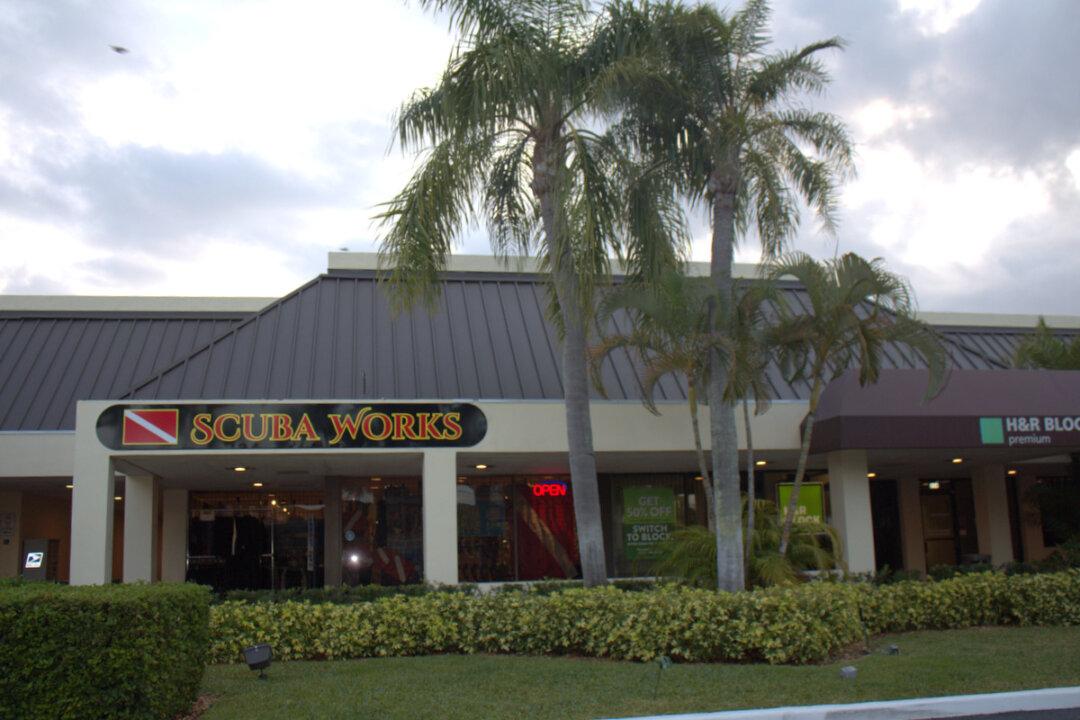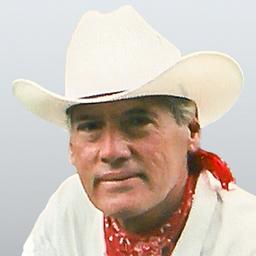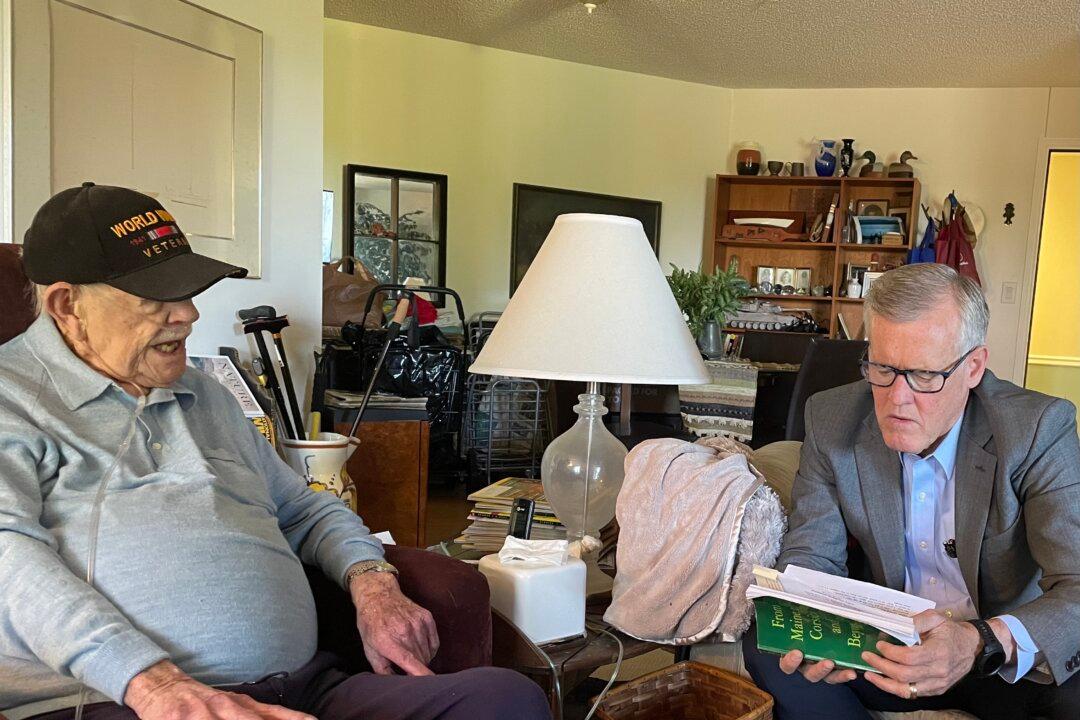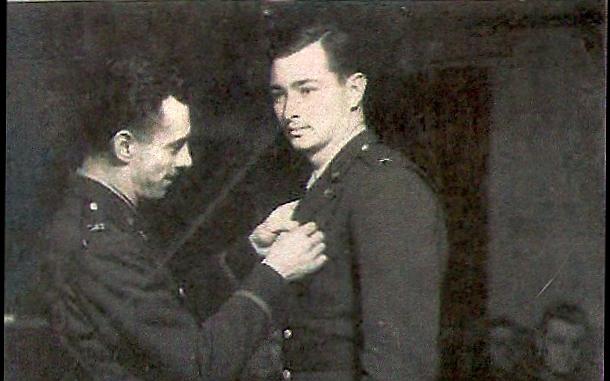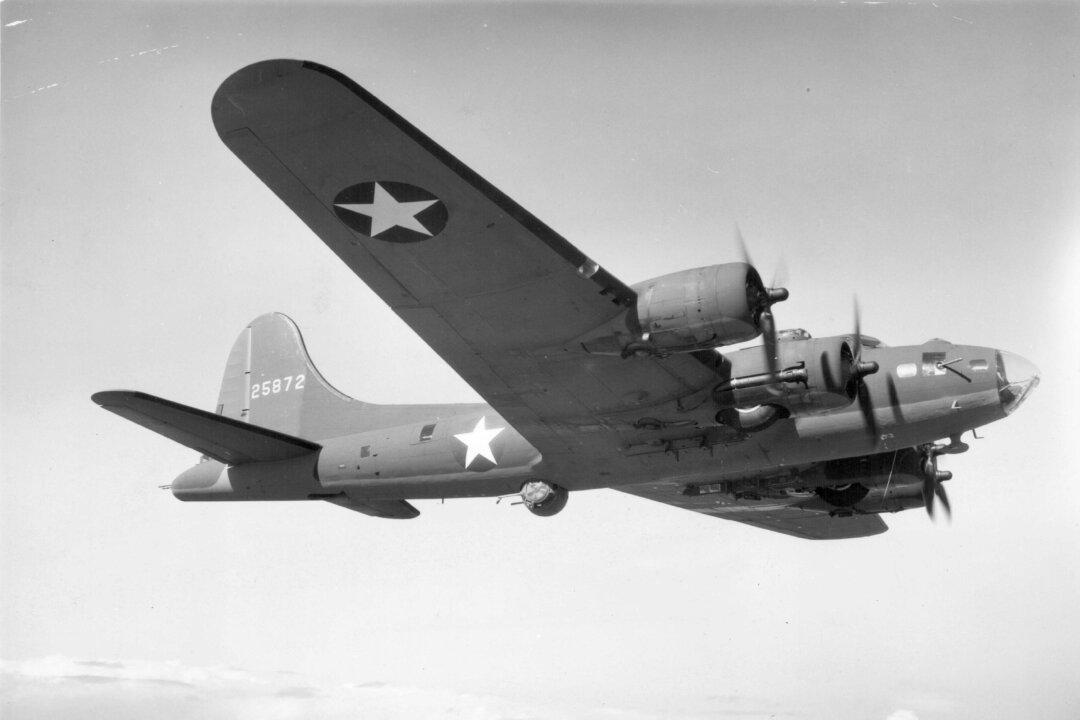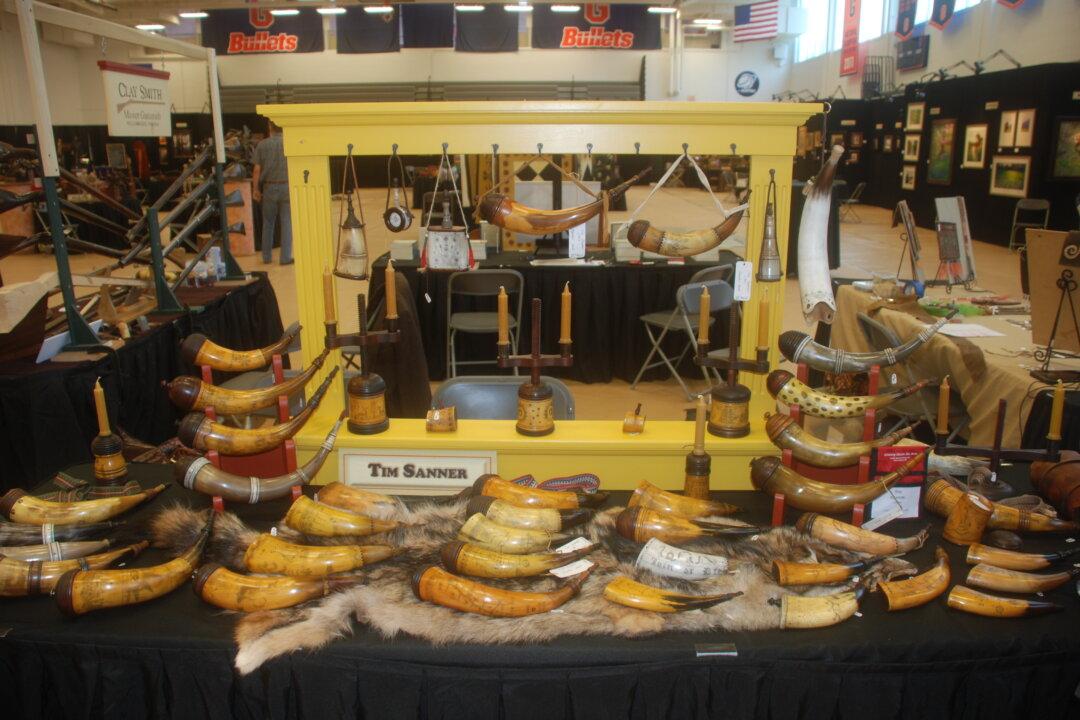Randy Jordan was born in Tampa. He didn’t dive until he moved to Miami. In
1980 he became a scuba instructor and has been diving and teaching diving ever
since. “I evolved,” he said. He was sitting aboard his 46 foot Burpee dive boat
moored at the brand new Harbor Side Marina behind a modern shopping mall just
north of Indiantown Road in Jupiter, Florida.
‘Emerald’ was painted light green. Randy’s logo includes a shamrock. The
vessel’s bow has a unique imprint. Large jaws appear on both sides of the prow
above the water line. Sharks are Randy’s hallmark. That and a unique lifestyle
logging three-tank dives almost every day to the tune of some 600 dives a year.
Other sixty-year-olds likely spend their days on the links or driving their
wives to hairdressing appointments. Randy can be found a hundred feet
underwater, speargun in hand, chum bucket attached to a line, enjoying what he
loves best: diving with sharks.
He’s offhanded and comes up with funny quips without trying. “We’re here
because we’re not all there,” he remarked as he insured all his divers had what
they needed aboard. “I only take good divers. That’s how I advertise. I just
want good divers.” A little later he pointed to a sign some diver must have
brought back from a National Park gift shop and put up on his boat. It reads
“Don’t feed the bears.”
Randy Jordan’s adventure dives require experience. He’s not going to drop
novice divers in a 110 foot depth, 4.3 miles offshore, beyond state territorial
waters, among lemon sharks looking for handouts. For experienced divers, diving
with Randy is the thrill of a lifetime. For underwater photographers
opportunities abound for close shark encounters. For Randy, he loves what he
does and seems content to be the ‘Pied Piper’ of sharkdom.
I checked in with Jay Cates at Scuba Works Dive Shop on U.S. 1 just south of
Indiantown Road in Jupiter. ‘Emerald’s’ departure time was early so got to
Scuba Works just after they opened at 7 AM. Jay and his wife Sandy moved to
Florida in 2003 from Raleigh, North Carolina. They purchased the dive shop in
2011. To hear Jay tell it, they never tried diving until they took a cruise. “I
worked in the corporate world. On that cruise Sandy and I snorkeled. We saw
divers down below us having more fun. We came back and took a course.” The shop
is a block or so from where Randy moors his boat, convenient to what Jay
declares, “We’re in paradise here. There is great diving in Jupiter.”
At the dock divers are greeted by Captain John Aldridge. He takes gear down
the convenient ramp and loads it aboard ‘Emerald.’ John is a 200 ton Ocean
Master who’s captained everything from sailboats and gigantic billionaire’s
yachts to dive live a boards in Belize and Bahamas waters. “We have single
seating for 22 divers. We never take more than 15, it’s not comfortable. We
only dive in out of state waters. Three and more miles offshore,” Captain John
explained.
There were only six divers aboard. Some gear divers were setting up included
highly technical rebreathers. These units are computerized closed-circuit
breathing apparatus that use pure oxygen in regulated amounts. Rebreathers have
filters to get rid of carbon dioxide. They do not release bubbles into the
water. This enables divers to approach marine life without the usual exhaust
bubbles that Scuba releases with every exhalation. Randy insists that his
divers use Nitrox or enriched oxygen berating mixtures. Randy always does three
tank dives. The locations where lemon sharks congregate are in from about 100
to 110 feet of water. Underwater photographers certainly sported the latest in
digital camera equipment and lighting.
Once boarded Randy gave a boat briefing then John pulled out into the
Intracoastal Waterway for a short trip north then out Jupiter’s inlet into the
Atlantic Ocean. The sun was out, there was no wind and the ocean flat calm. One
of those exceptional south Florida winter days that made for perfect
conditions.
It took about forty-five minutes to get on site. Randy prepared his plastic
milk carton with chunks of fish. Once the fish steaks were cut into delectable
bite size portions, Randy took the large head and pushed a line through the
mouth and gills so he could hold onto it. A tempting tidbit for his hungry
friends.
“The ocean temperature dropped one degree. It’s 70 to 71. That means the
sharks are going to be full of energy. It’s amazing how one degree changes
their behavior,“ Randy said. ”We hardly ever get water below 73 degrees. For
the sharks that’s energy. If it’s that cold I’m not even going to feed them.
Just put the bucket down and open it. The money shot will be the boil.” Randy
made his way to the stern with his box of chum on a line, long speargun and
fish stringer.
Captain John put us on site and we jumped in. I followed Randy down. The
bottom was non-descript. Occasional coral rocks on sand. Almost immediately a
large Goliath grouper appeared then lemon sharks. Randy calls the big Goliath
‘Jordy,’ one of his pals. Randy decided to feed after all. He opened the milk
carton and held out a chunk of fish. As if on cue five lemon sharks began to
circle him awaiting the free meal.
The site is called Gary’s and is 110 feet to the sand. The six divers were all
experienced. No one rushed in or got in the way of the others so that all would
have a chance to take good pictures. Randy didn’t remain in one spot, rather
swam with his milk carton of chum. He used a large serrated bread knife to bang
on his speargun. Randy’s version of Pavlov conditioning. It was unnecessary.
The sharks were all over him.
Now for his underwater act. While it may seem casual, Randy’s mastery of shark
behavior, knowing what to do and when and how far to go, is the result of years
of experience. He used the serrated bread knife to downsize chunks of fish.
Some of the blood and fluid discharge leaked from his milk carton. The lemon
sharks were excited. They passed within inches of the divers. Some nudged my
yellow fins. I had those fins a long time and didn’t relish getting a chunk
taken out of them. The lemon sharks quickly determined they were not edible so
only took casual interest. Seeking free handouts they swam from diver to diver
then back to their main man, Randy, with his fishy food.
He let the plastic covered milk carton dangle and stopped feeding. A lemon
shark swam up to him and put its snout against Randy’s mask, or it certainly
looked that way. Randy reached out with his gloved hand and took the snout in
his hand and squeezed it. The ten foot shark seemed to like it. It was
mesmerized for a few seconds until Randy released his grip and the shark swam
away. He repeated the same thing on different sharks during the dives. On
several occasions Randy would use his two gloved hands and squeeze and shake
the shark by its snout, mesmerizing it for a few seconds, then push it away.
The large ocean dweller would swim off, circle and come back again later.
The sharks were well mannered for the most part. They didn’t fight for food
and often a chunk of fish would float in the water column for a while, nibbled
at by remoras or myriad small fish, until one of the lemon sharks took an
interest and wolfed it down in a gulp.
Now Randy puled out the fish head on his line. He was up off the bottom. This
was the denouement the underwater photographers were waiting for. A large lemon
shark grabbed the fish head and tried to swim off with it. Randy held fast to
the line. The shark was jerked back toward him. It let the fish head go and
swam away. When another shark did the same Randy resembled a man out walking
his dog. Randy kept the sharks interested and close, maneuvering them in range
of the photographers. Several times this shark master held out his hand to a
photographer indicating patience. He would then take a fish bit out of the milk
carton and swim into clear water. He was now about fifty feet off the bottom.
The sharks were in clear water, necessary for good pictures. Almost on cue two
sharks swam up between Randy and the diver for the photo op the diver was
waiting for.
Randy surfaced leaving divers in the water to take their photographs and
decompress at their own pace. He was aboard to help take cameras and gear
passed up as divers swam to the convenient ladder at ‘Emerald’s’ stern. The
ladder is of a design that enables divers to mount without having to remove
their fins. It is very convenient with thick aluminum rails on both sides to
hold on to.
Once aboard there was a lot of excitement. Divers related their experiences.
The hot water hose felt good to rinse off and warm up. The sun was out so some
divers pulled their wetsuits off, most kept them on for convenience. There was
a forty minute surface interval before the next dive. “This will be ‘Wreck
Trek,” Captain John said from the bridge.
“There are three wrecks that we'll swim to. First is Zion, then Miss Jenny and
Esso Bonaire,” Randy explained. The depth was 100 feet to the sand. The ocean
was cold, about 73 F. I was glad I layered my wetsuits and included a 3
millimeter under my 8 millimeter. We had been down an hour on the first dive
and would stay a little longer on the second dive. Everyone was on Nitrox mixed
gas that enabled longer down time and shorter surface intervals.
I followed Randy down. His milk carton was refilled with chunks of fish and he
had his spear gun and stringer along. Randy swam quickly to the first wreck.
These vessels were put down as part of Palm Beach County’s artificial reef
program. They are havens to all manner of marine life. I spent time taking
pictures of the ships. The water was clear with some 70 foot visibility.
Goliath groupers swam near the wrecks but did not venture close enough for
those amazing shots I'd hoped for. Randy’s sister, Terry Roberts, swam by with
her camera. There was about a one knot northward current. Enough so that I got
into one of the wrecks to get out of the current to take photos. I followed
Terry to the next wreck, an upside down barge, then along to the Esso Bonaire.
Randy was there, he used his thumb to signal us to the stern.
The Bonaire is a photogenic wreck. I snapped off some shots then went to the
stern. Divers were already kneeling in the sand in a semi-circle. Randy left
his milk carton on the bottom. While it was fastened closed with its plastic
lid, what was emanating from it gave sharks and hundreds of little fish
anticipation of a free meal. Randy disappeared with his speargun. No matter,
the show was on around the chum carton.
Six lemon sharks swam in and out of the surrounding fish. Sometimes the little
fish were so numerous that the sharks were totally obscured. In some instances
the small school of fish parted and a shark swam directly at the divers through
the surrounding mass of fish. Tidbits of chum were being nibbled at by small
fish while the lemon sharks awaited their free meal.
I swam up to the stern deck of the Bonaire to take a panorama of the divers
below. It was like watching performers at a circus. The audience was
comfortably ranged around while the stars did their act. In this case the stars
were a half-dozen ten to twelve-foot lemon sharks.
I saw a large barracuda tied to a hatchway. Its gills were still pulsing.
Randy was not around although I assumed this was part of his spearfishing
success. In a few minutes he appeared with two more speared fish on his
stringer. Randy used his serrated bread knife to chunk up the barracuda then
swam down to the sand where he'd left his fish box. There was pandemonium. The
sharks swirled around him. Randy was in control, put his chunks of fish in the
milk carton and left fish on the stringer attached to his belt.
That was chancy and Randy knew it. He held his speargun out to fend off
aggressive sharks that swam too close to the fish on his belt. He needed those
for the next dive and didn’t want them pulled off the stringer. Randy swam
about sixty feet off the bottom and hovered. The lemon sharks swam up with him.
They circled, took hand outs in the clear water and posed for photographs.
Randy repeated his snout grabbing. He sometimes petted a shark. It seemed that
they were his long-time underwater friends. He would fend off their overly
aggressive behavior by pushing them away or smacking them on the snout,
occasionally poking them with his speargun. Most times he only had to gesture
toward them and they swam fast away.
In the distance a nine foot scalloped hammerhead shark loomed out of the blue.
It didn’t remain close, observed the divers then swam away. Randy has
interacted with tiger sharks that come into the Jupiter area in March and
April. Lemon sharks remain but their aggregation is most prevalent in January
and February. Goliath groupers are ever present as are bull sharks and nurse
sharks. Hammerheads were seen at a distance on two dives this day. They did not
come in close enough for photographs.
We surfaced. Randy was aboard to help with our cameras and gear. When the
divers were ready Randy handed out catered boxed lunches, included in the
trip. There were shaved ham sandwiches, home baked cookies and fruit. The
cooler had bottled water and soft drinks. Divers relaxed. Some showed off
shark’s teeth they found below.
“This is a bull shark tooth,” Terry Roberts said. She put the tooth against
her own teeth to feel its serrations. Another diver showed off a lemon shark
tooth he found on the bottom. Underwater photographers worked with their
equipment, divers changed over tanks and Randy ate his lunch and answered
questions.
Randy freely discussed a ’sting' operation conducted by the Palm Beach County
Sheriff’s Office and Florida Fish and Wildlife Conservation Officers. In 2002
Florida passed a law banning scuba divers from feeding animals in state
territorial waters. They continued to allow fishermen to chum for fish. The
‘hype’ to get the legislature to pass the law was suggested complaints that
divers were seeing aggressive sharks looking for food. The fishing lobby, a
multi-billion dollar important industry in Florida, insured the legislature did
not interfere with their practice to lure fish to hook. That would be akin to
destroying the livelihood of deep sea fishermen, one of Florida’s most
important tourist draws.
“In February last year the FWC gave me a citation for feeding marine animals
in state waters. It was an underwater sting. They said I was within 300 feet
inside state waters. The margin of error on1984 maps plus the GPS error makes
it difficult to sustain. If convicted it is a second class misdemeanor that
subjects violators to a maximum of 60 days in jail and a $500 fine,” Randy
explained.
“My position is real simple. Conservation begins with education. Lots of
divers I take out have never seen a shark. They saw the film ‘Jaws.’ They see
that sharks do not eat divers. We kill 110 million sharks a year for the Asian
trade. That is my lot in the shark ecosystem, to provide education. There was a
recent shark fishing tournament. They chummed for sharks and killed several
hammerheads that they buried on the beach. Some say the shark is a by-catch,
they didn’t mean to catch it. It is hard to enforce. I’m in favor of not
feeding sharks close to shore. We go off at least three miles in deep water. I
only take good divers. That’s what I do,” Randy said. He had no animus about
what happened in the law enforcement action, only steadfast desire to teach
people about these apex predators in the ocean and work his own means of
conservation through educating divers.
Randy cut more fish from his recent catch into chunks. He strung the
barracuda’s head on his line. When his divers were ready Randy called up to
Captain John to drop us on the Esso Bonaire. Randy left his milk carton below
so put his fish chunks in a blue mesh bag.
He was underwater quickly. I followed Randy down for the third dive. It seemed
colder, even through my three layers of wetsuits. Randy is a Technical Dive
Instructor and Master Scuba Diver Trainer. He’s been teaching divers a long
time. We swam over the stern of the wreck and down to where Randy left his milk
carton. The group of territorial lemon sharks began circling, smaller fish came
in and enjoyed the free meal. Underwater photographers clicked away. It wasn’t
my imagination, the ocean water was colder by at least two degrees and the
lemon sharks were very active.
Randy let the action unfold then swam up off the bottom with his mesh bag. The
sharks were more aggressive than on the precious dive at that site. Finally he
had to let go of the mesh bag with its contents to a particularly aggressive
shark. He petted his pals, held some by their snoots and enjoyed his life
beneath the waves.
Back aboard ‘Emerald’ divers packed their gear, showered off with hot water
and thanked Randy for providing them with an opportunity to take great
underwater photos and participate in the dives. Each of us came away with
special insight into shark behavior and this amazing dive pioneer’s dedication
to shark conservation and education.
For more information go to www.emeraldcharters.com. To book trips with Randy
Jordan contact Scuba Works at 561-575-3483 or visit them on line at
www.scubaworks.com
